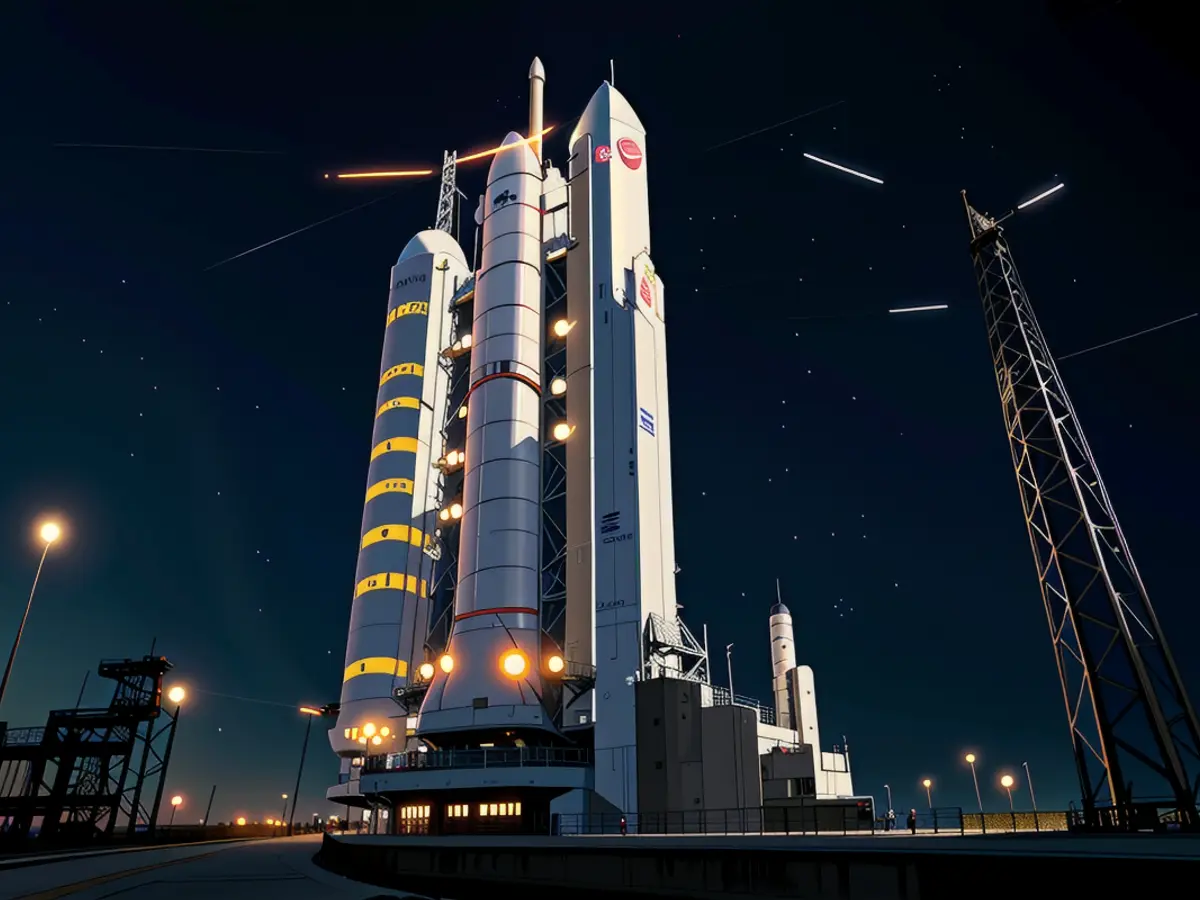Unveiling Euclid's Initial Massive Data Release: Charting 26 Million Galaxies to Shed Light on the Mysterious Dark Universe
The Euclid Journey:
Ready your gaze upon the cosmos, as the Euclid space telescope embarks on an epic, 6-year voyage to chart more than a third of the entire sky, observing billions of galaxies. This mission, launched on July 1, 2023 at a whopping cost of $1.4 billion, aims to shed light on the universe's elusive dark side.
In its inaugural data release, Euclid unveiled a mesmerizing mosaic of millions of distant galaxies, showcasing its remarkable ability to probe the cosmos. Spanning an area mammoth enough to cover 300 full Moons, this initial survey has left scientists buzzing with anticipation.
Three celestial panoramas were targeted for the telescope's debut, with the promise of more profound observations to follow. Astoundingly, Euclid managed to capture 26 million galaxies in meticulous detail – no small feat, considering over 380,000 of these galaxies were classified based on their distinct shapes and distances from Earth.
The farthest of these celestial wonders lies a staggering 10.5 billion light-years away. The collective wisdom of scientists worldwide is now being harnessed to unravel the mysteries hidden within these galaxies.
A team of researchers from Oxford, Portsmouth, and Newcastle universities collaborated with citizen scientists to pore over the data, focusing on the elusive phenomenon of strong gravitational lenses. These cosmic oddities occur when massive objects, such as galaxies, warp spacetime around them, acting as a cosmic magnifying glass for distant objects.
With Euclid's remarkable data in hand, the team has identified a staggering 500 potential strong gravitational lens candidates. As of now, less than 1,000 such lenses have been documented. "These lenses mark just the beginning of Euclid's transformative impact on strong gravitational lensing," shared Natalie Lines, a PhD student at the University of Portsmouth.
The Max Planck Institute for Extraterrestrial Physics (MPE) has partnered with Euclid to create a comprehensive galaxy catalog, blending various sky surveys with Euclid data. This effort will aid researchers in identifying numerous galaxies within the high-resolution images and measuring their distances from Earth. As Christoph Saulder, a researcher at MPE involved in the project, remarked, "This catalog acts as a stepping stone towards a deeper understanding of these cosmic entities, their distribution, and their internal properties."
As Euclid continues its cosmic journey, it promises to create the most extensive 3D map of the universe to date. Equipped with a visible light camera (VIS), a near-infrared camera, and a spectrometer (NISP), Euclid will pry open the secrets of the dark universe – the composite 95% of our cosmos comprising dark energy and dark matter.
In a breathtaking display in February 2024, Euclid captured an Einstein Ring in the galaxy NGC 6505, approximately 590 million light-years from Earth. The first release of cosmology data is scheduled for October 2026. With each passing observation, Euclid offers tantalizing glimpses into the most hidden corners of our universe.
[1] https://arxiv.org/abs/2203.08862[2] https://www.esa.int/eoc/eoc/search/oesi_euclid.html[3] https://www.imperial.ac.uk/news/194744/euclid-space-telescope-on-mission-to-unravel-the-universe/[4] https://www.st-andrews.ac.uk/news/research/2022/euclid.-space-telescope-snaps-earliest-known-image-of-a-galaxy/[5] https://www.max-planck-institute.de/euclid-launch/
- With its launch in 2023, the Euclid space telescope embarks on a six-year mission, aiming to explore the cosmos and uncover the mysteries of the universe's dark side, particularly dark energy and dark matter, using technology like a visible light camera (VIS), near-infrared camera, and spectrometer (NISP).
- A significant portion of this mission involves creating a comprehensive galaxy catalog, which will combine various sky surveys with Euclid data, enabling researchers to identify and measure the distances of numerous galaxies, a process initiated by the Max Planck Institute for Extraterrestrial Physics (MPE).
- In its initial data releases, Euclid showcases its ability to observe billions of galaxies in intricate detail, capturing celestial panoramas and even identifying 500 potential strong gravitational lens candidates, an important discovery that can help scientists better understand the universe's most profound secrets.
- The future of space exploration promises to reveal more questions than answers, but with the addresses of these distant galaxies cataloged and their characteristics studied, humanity ventures one step closer to unraveling the enigmatic space, bringing us a step closer to deciphering the secrets of the universe.








